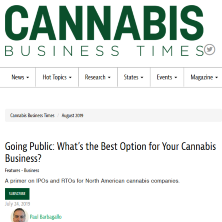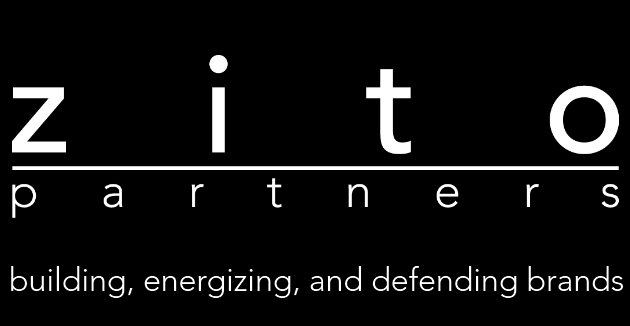 Going Public: What’s the Best Option for Your Cannabis Business?
Going Public: What’s the Best Option for Your Cannabis Business?
A primer on IPOs and RTOs for North American cannabis companies.
This is Part II of a two-part series on taking your company public. Part I of the series—“Going Public: Are You Ready?” (including a 7-point checklist)—ran in Cannabis Business Times’ July issue.
So, you think you’re ready to go public. Now what?
To become a publicly traded company in the U.S. or Canada, there are basically two options: an IPO (initial public offering) or an RTO (reverse takeover—or “reverse merger” in the U.S.).
In an IPO, companies sell shares to the public via a stockbroker. In an RTO, a business buys enough shares to control a publicly traded “shell,” then exchanges shares in its private company for shares in that shell. The process allows the business to go public without having to endure the same scrutiny from regulators and investors.
The path you choose will depend on several factors. The first and most important is corporate domicile. Does your primary business take place in Canada, where cannabis is legal? If so, an IPO on the Toronto Stock Exchange (TSX) or even the New York Stock Exchange (NYSE) or Nasdaq may be the most logical, and potentially the most lucrative, course. Because banks in Canada recognize cannabis companies as legitimate businesses, the listing process on primary exchanges, such as the NYSE or TSX, is cleaner and easier. (Many Canadian cannabis companies, such as Aurora Cannabis and Canopy Growth, have shares listed on both Canadian and U.S. exchanges.)
But if your business is based in the U.S., where adult-use cannabis is legal in only 11 states and Washington, D.C., and remains banned at the federal level, one of the only options available is an RTO on the Canadian Securities Exchange (CSE). A handful of multistate U.S. cannabis operators have already taken this step in the hopes of eventually uplisting to a larger exchange once the laws change.
“We’re seeing more U.S. companies start the process of preparing for a go-public transaction but deferring an actual filing, as they’re hoping for more clarity on the direction of the U.S. regulatory environment and what impact any changes may have on the willingness of the U.S. exchanges to list U.S. cannabis operators,” Scott Hammon, COO of the MGO | ELLO National Cannabis Alliance, tells Cannabis Business Times.
Regardless of whether your company is U.S.- or Canada-based, the decision between an IPO or an RTO will always come down to the nature of the transaction (a rollup of multiple entities versus a single company), the availability of “reasonably priced” shell companies, timing and price, according to Hammon. IPOs are typically more expensive to execute and take longer, but many bankers believe an IPO will price higher, Hammon says.
In this article—Part II of a two-part series—cannabis industry experts share the pros and cons of IPOs and RTOs and offer advice you should consider before making a final decision.
Read more here: https://www.cannabisbusinesstimes.com/article/going-public-whats-the-best-option-cannabis-business/
